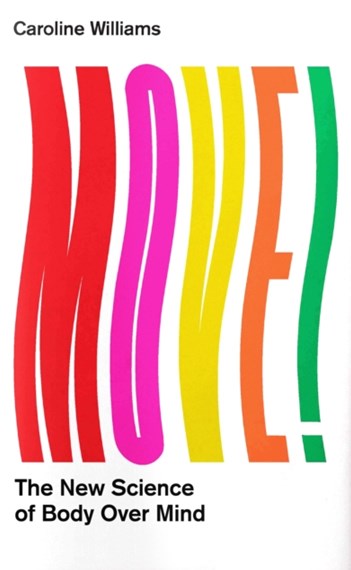 I like a bit of popular science, and find recent books dealing with the emerging and amazing research on the brain are especially fascinating. This one, by science journalist Caroline Williams, has a practical element too, which makes it fascinating and useful.
I like a bit of popular science, and find recent books dealing with the emerging and amazing research on the brain are especially fascinating. This one, by science journalist Caroline Williams, has a practical element too, which makes it fascinating and useful.
Her basic point it that the relationship between brain and body is not best likened to a super-computer running a machine. It’s deeper, more complex and more intertwined. In fact, she says that a better analogy is the brain as chat room, where all sorts of different messages from all over our bodies – internal organs, skin, muscles, joints and the rest – are humming and buzzing and pinging all the time. And that’s the way it’s meant to be, because as human animals, hunting and gathering in forest or savannah, we evolved from creatures for whom movement was survival.
The brain evolved not for us to think, but to allow us to move – away from danger and towards rewards. Everything else, from our senses to our memories, emotions and ability to plan ahead, was bolted on later to make these movements better informed. Moving is at the heart of the way we think and feel. If we stay still, our cognitive and emotional abilities become seriously compromised.
What happens if we stop moving? I guess we all know – we can put on weight, lose fitness, damage our cardiac and respiratory health, possibly become anxious or depressed or even lower our IQ.
Williams has talked with scientists and researchers all over the world to come up with a lucid and illuminating explanation of why we need not just to move, but to incorporate different kinds of movement into our lives for our mental, emotional and physical well-being.
Walking, developing muscular strength, dancing, strengthening our cores, stretching, paying attention to breathing and finally, resting are all covered in short and readable chapters with a little action plan at the end. She stresses that you don’t need to go to the gym. All of these movement types are possible within our daily lives without special equipment or the ‘weekend warrior’ mindset.
And Williams solved a little puzzle of mine. I am (or used to be) extremely flexible; as a kid I was what we called ‘double jointed’, and could do all sorts of contortions and body tricks. I used to think that being flexible is good, but I now know that it’s actually a case of lax ligaments.
And lax ligaments don’t ‘talk’ as well or as quickly to the joints, bones, muscles and tendons. Which seems to explain why I am a tad clumsy – the toll on our glassware will attest to that – and why I am wearing out my hands and wrists. I exert more pressure than I need to when I use my hands or when I walk. That’s why I have deformed the nib of my fountain pen and wear out my shoes so fast. And why I need to go to a hand surgeon to see if anything can be done about my wear and tear and damage.
Most of us know we need to move, or move more and I found Move! a motivating and encouraging ‘movement manifesto’.
